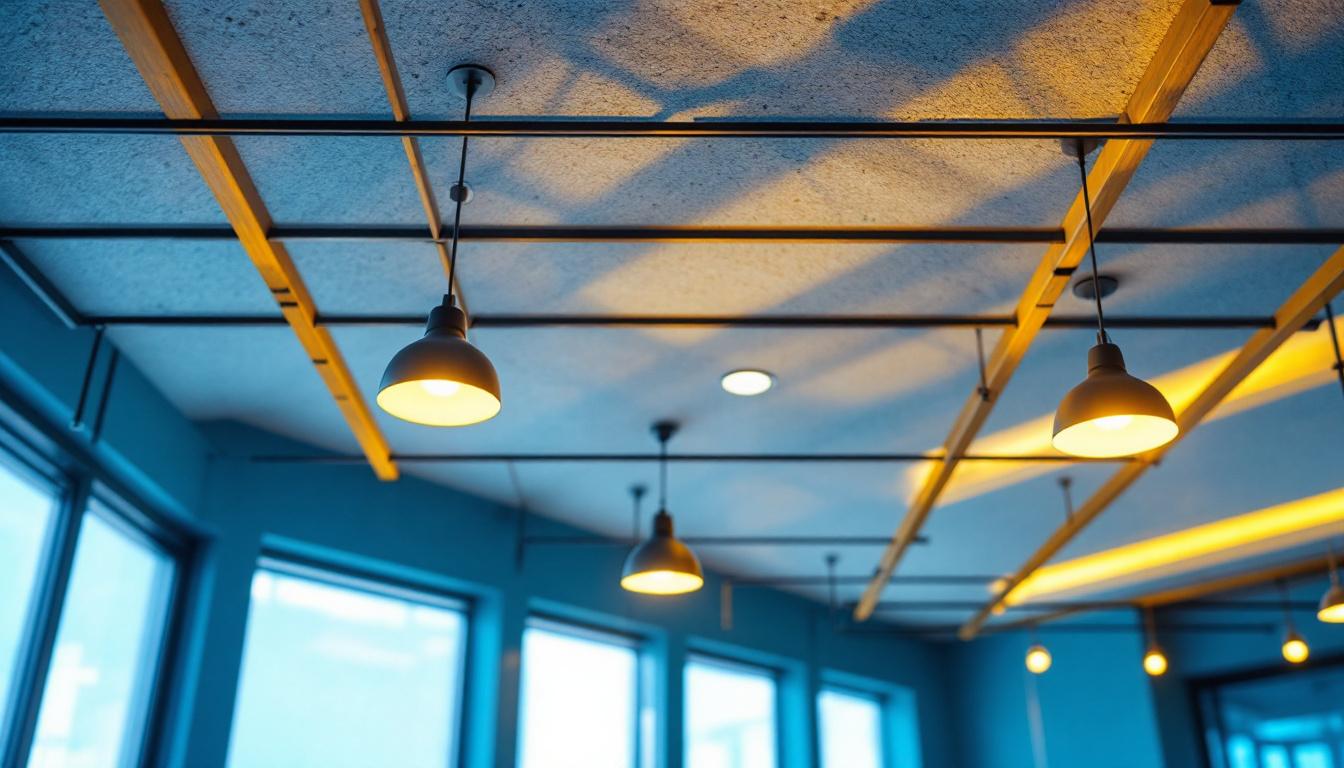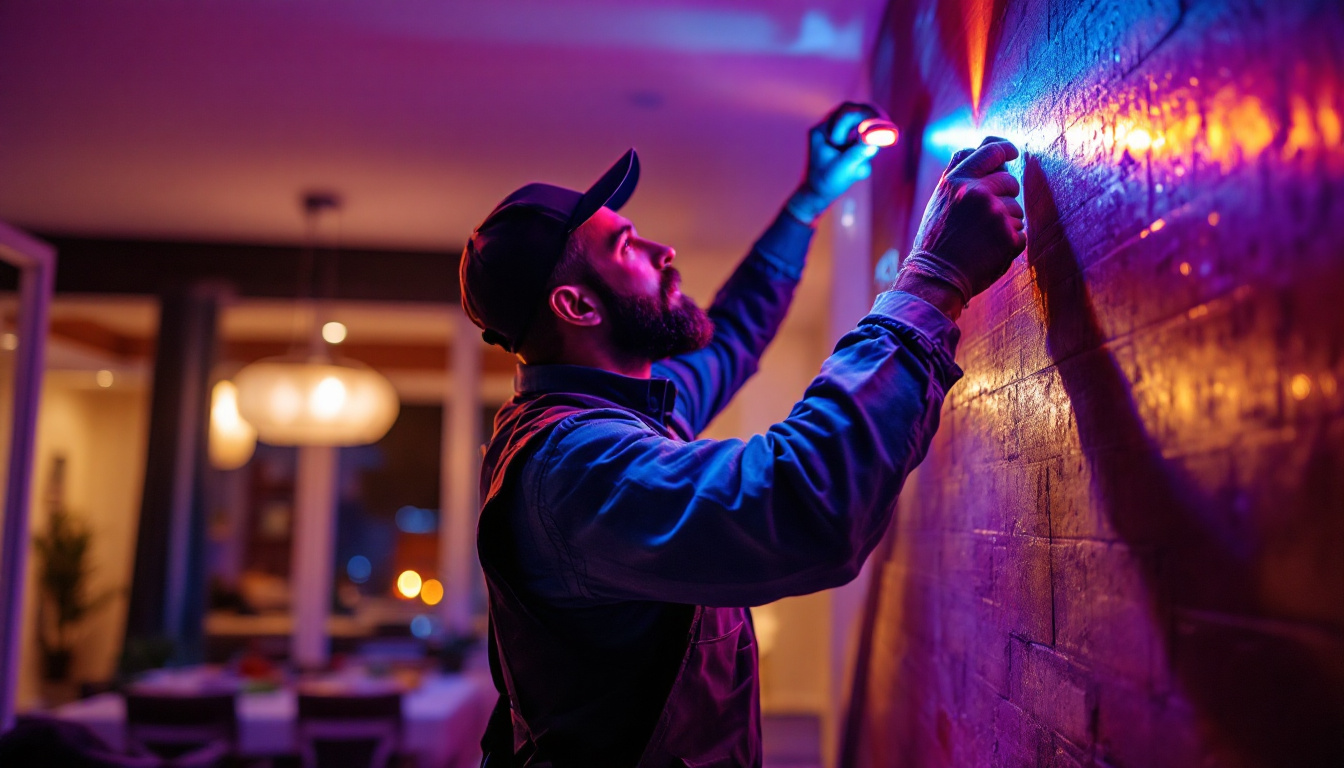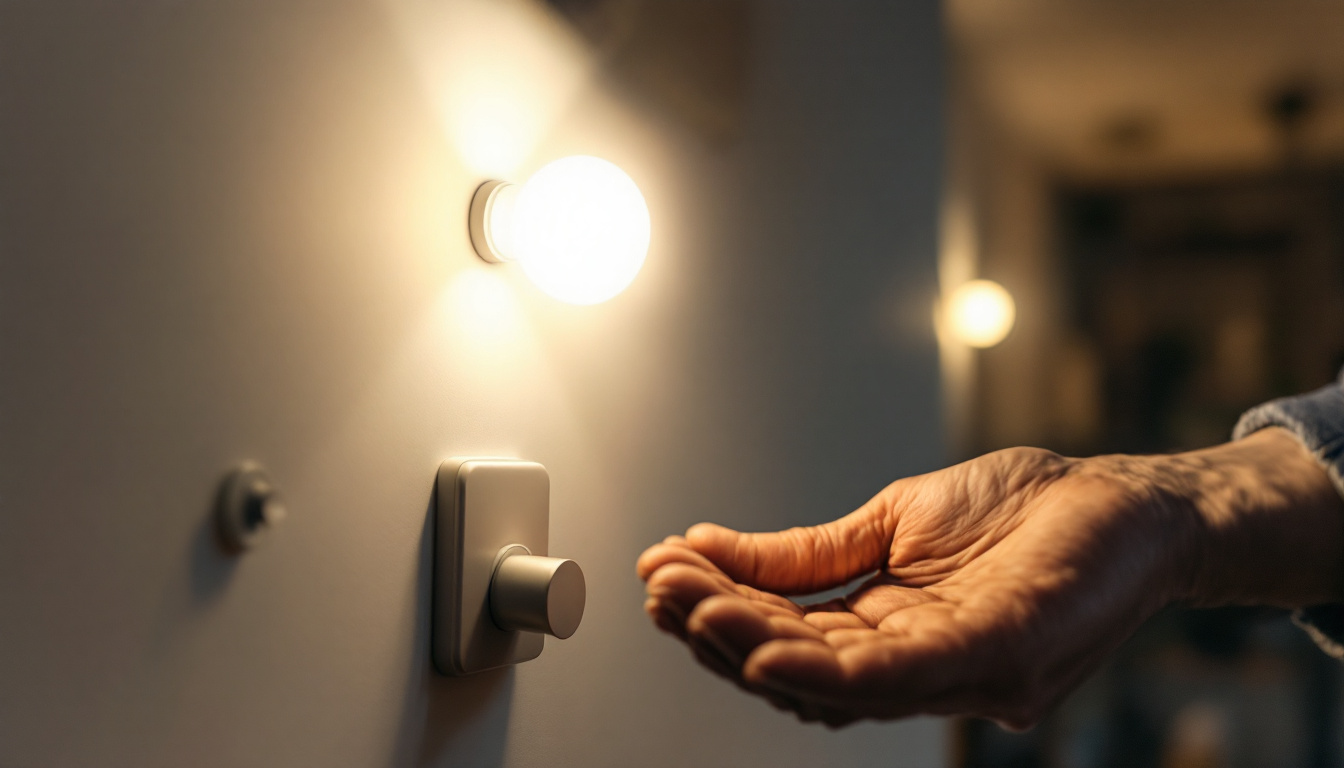
Drop ceilings, also known as suspended ceilings, are a popular choice in commercial and residential spaces due to their versatility and ease of access to utilities above the ceiling plane. For lighting contractors, selecting and installing the right light fixture for drop ceilings is a critical task that influences both the functionality and aesthetics of the space.
Drop ceilings typically consist of a grid system that supports lightweight ceiling tiles. This grid creates a modular framework, allowing for various types of lighting fixtures to be integrated seamlessly. However, the unique structure also imposes specific requirements and limitations on fixture size, weight, and installation methods.
Lighting contractors must be well-versed in the different fixture types compatible with drop ceilings, including troffers, recessed lights, surface-mounted fixtures, and pendant lighting. Each option presents its own set of advantages and challenges, depending on the project’s design goals and technical constraints.
Drop ceiling lighting fixtures are favored for several reasons. They provide a clean, uniform appearance, which is essential in office environments, healthcare facilities, and educational institutions. Additionally, these fixtures often come with integrated diffusers that reduce glare and distribute light evenly, enhancing occupant comfort.
Another key benefit is maintenance accessibility. Since the ceiling tiles are removable, lighting fixtures installed within the grid can be serviced or replaced without major disruption. This is especially important for commercial buildings where downtime can be costly.
Moreover, drop ceiling lighting can significantly contribute to energy efficiency. Many modern fixtures are designed to accommodate LED technology, which not only consumes less power but also has a longer lifespan compared to traditional incandescent bulbs. This shift not only reduces energy costs but also minimizes the frequency of replacements, further enhancing the overall efficiency of the lighting system. Additionally, with the rise of smart lighting solutions, contractors can integrate advanced controls that allow for dimming, scheduling, and even occupancy sensing, providing an adaptable lighting environment that meets the dynamic needs of the space.
Furthermore, the aesthetic versatility of drop ceiling lighting cannot be overlooked. With a wide range of designs and finishes available, lighting fixtures can complement various interior styles, from sleek and modern to more traditional looks. This adaptability allows designers to create cohesive environments that reflect the brand identity of commercial spaces or the personal taste of homeowners. The ability to mix and match different types of fixtures within the drop ceiling grid also opens up creative possibilities, enabling unique lighting layouts that enhance the overall ambiance of the room.
“`html
One of the most frequent questions is about the best fixture types for drop ceilings. The answer depends on the application and design requirements, but some of the most common fixtures include:
In addition to these common options, contractors may also consider track lighting systems, which offer flexibility in directing light where it’s needed most. These systems can be particularly useful in retail or gallery settings, where adjustable lighting can highlight specific displays or artworks. Furthermore, smart lighting solutions are gaining popularity, allowing for programmable settings that can adapt to different times of day or activities, enhancing both functionality and energy savings.
Drop ceilings are designed to support lightweight tiles and fixtures, so heavier lighting components require additional support. Contractors must verify the weight limits of the ceiling grid and use supplementary hangers or brackets as necessary.
Ensuring safety also involves compliance with local building codes and standards such as the National Electrical Code (NEC). Proper grounding, secure wiring, and fire-rated fixtures are essential considerations. Lighting contractors should coordinate with structural engineers when planning installations involving heavy or complex fixtures.
Moreover, it’s crucial to conduct regular inspections of the ceiling grid and fixtures after installation. Over time, vibrations from HVAC systems or foot traffic above can loosen fixtures or compromise their integrity. Implementing a maintenance schedule can help identify potential issues early and ensure the longevity and safety of the lighting installation.
LED technology has become the industry standard for drop ceiling lighting due to its energy efficiency, long lifespan, and versatility. LEDs offer superior color rendering and dimming capabilities compared to traditional fluorescent or incandescent options.
Fluorescent fixtures were once common in drop ceilings but are increasingly being phased out due to environmental concerns and maintenance costs. LED fixtures also generate less heat, reducing HVAC loads and improving overall building efficiency.
Additionally, advancements in LED technology have led to the development of tunable white lighting, which allows users to adjust the color temperature throughout the day. This feature can enhance productivity in office environments by mimicking natural daylight, helping to regulate circadian rhythms. As the demand for sustainable and energy-efficient solutions grows, lighting contractors should stay informed about emerging technologies and trends to provide the best options for their clients.
“`
One of the practical challenges in drop ceiling lighting installation is ensuring the fixture fits precisely within the grid dimensions. Standard ceiling tiles are typically 2×2 feet or 2×4 feet, so fixtures are designed to match these sizes. However, contractors may encounter non-standard grids or irregular ceiling layouts that require custom solutions.
Accurate measurements and planning are crucial to avoid costly modifications or misalignment. Manufacturers often provide detailed specifications and installation guides to assist contractors in selecting the right fixture size.
Since drop ceilings provide easy access to the plenum space above, wiring for light fixtures can be routed efficiently. However, contractors must ensure that wiring methods comply with electrical codes, particularly regarding fire safety and insulation.
Accessibility for maintenance is another factor. Fixtures that are difficult to remove or service can increase long-term costs. Choosing modular fixtures with easy access panels or quick-release mechanisms can improve serviceability.
Proper thermal management is critical for fixture longevity and performance. Although LEDs produce less heat than traditional bulbs, enclosed fixtures in drop ceilings can still accumulate heat if ventilation is inadequate.
Contractors should select fixtures with appropriate heat sinks and ensure that the ceiling plenum allows for sufficient airflow. This consideration helps prevent premature fixture failure and maintains energy efficiency.
Many jurisdictions have energy codes that set minimum efficiency standards for commercial lighting. Lighting contractors must be familiar with these regulations to ensure compliance and to help clients benefit from available incentives.
Installing LED fixtures with advanced controls such as occupancy sensors, daylight harvesting, and dimming can significantly reduce energy consumption. These technologies not only lower operational costs but also contribute to sustainability goals.
Beyond energy efficiency, contractors should consider the environmental impact of lighting fixtures. Selecting products with recyclable materials, low mercury content, and certifications such as ENERGY STAR or DLC (DesignLights Consortium) supports green building initiatives.
Proper disposal and recycling of old fixtures, especially fluorescent lamps, are also important to minimize environmental harm.
While drop ceiling lighting is often associated with utilitarian spaces, design trends increasingly emphasize aesthetics. Lighting contractors should work closely with architects and interior designers to select fixtures that complement the overall design theme.
Options such as color temperature tuning, fixture shape, and diffuser styles can influence the ambiance of a space. For example, warmer color temperatures create a welcoming environment in hospitality settings, while cooler temperatures promote focus in office areas.
The rise of smart building technologies has introduced new possibilities for drop ceiling lighting. Fixtures compatible with wireless controls, automated scheduling, and integration with building management systems enhance user experience and operational efficiency.
Contractors should stay informed about emerging technologies and ensure that new installations can accommodate future upgrades without extensive rewiring.
Regular maintenance is essential to keep drop ceiling lighting functioning optimally. Dust accumulation on diffusers can reduce light output, and loose connections may cause flickering or outages.
Contractors should advise clients on scheduling periodic inspections and cleaning, especially in environments prone to dust or moisture.
Lighting contractors often encounter issues such as flickering lights, dimming problems, or complete fixture failure. Common causes include faulty ballasts or drivers, wiring problems, or incompatible dimmers.
Systematic troubleshooting involves checking electrical connections, testing components, and verifying compatibility with control systems. Keeping detailed records of fixture models and installation details facilitates efficient repairs.
For lighting contractors, understanding the nuances of light fixtures for drop ceilings is vital to delivering high-quality, reliable, and efficient lighting solutions. From selecting the right fixture type and ensuring proper installation to addressing energy efficiency and maintenance, each aspect requires careful consideration.
By staying informed about current technologies, codes, and design trends, contractors can meet client expectations and contribute to creating well-lit, comfortable, and sustainable environments.
“`html
Ready to elevate your lighting projects with the highest quality fixtures for drop ceilings? Look no further than LumenWholesale, where we provide contractors with spec-grade lighting products at exceptional wholesale prices. Our commitment to cutting out the middleman means you enjoy superior lighting without the inflated markups. With our vast selection that meets rigorous industry standards, you can trust that your installations will be reliable and high-performing. Plus, our hassle-free bulk buying with free shipping ensures you get the best value without any hidden fees. Don’t compromise on quality or cost. Visit LumenWholesale today for the perfect blend of quality, affordability, and convenience.
“`

Discover the essential insights and advantages of Keystone Lights in this comprehensive guide tailored for lighting contractors.

Explore the intricacies of dimmable LED lights with insights from top lighting contractors.

Discover the must-have tools for lighting contractors in this comprehensive guide.

Discover the top strategies lighting contractors use to maximize the efficiency and aesthetics of outdoor solar lamps.